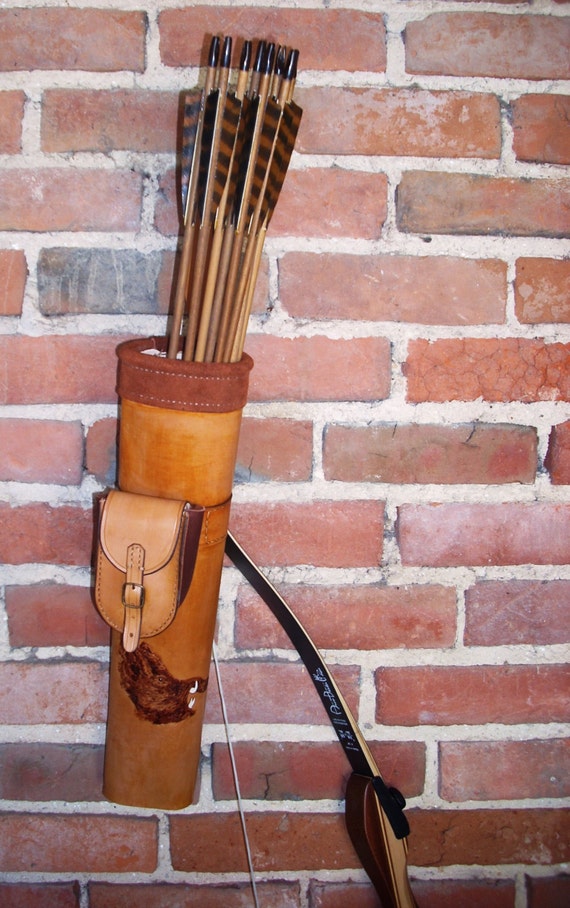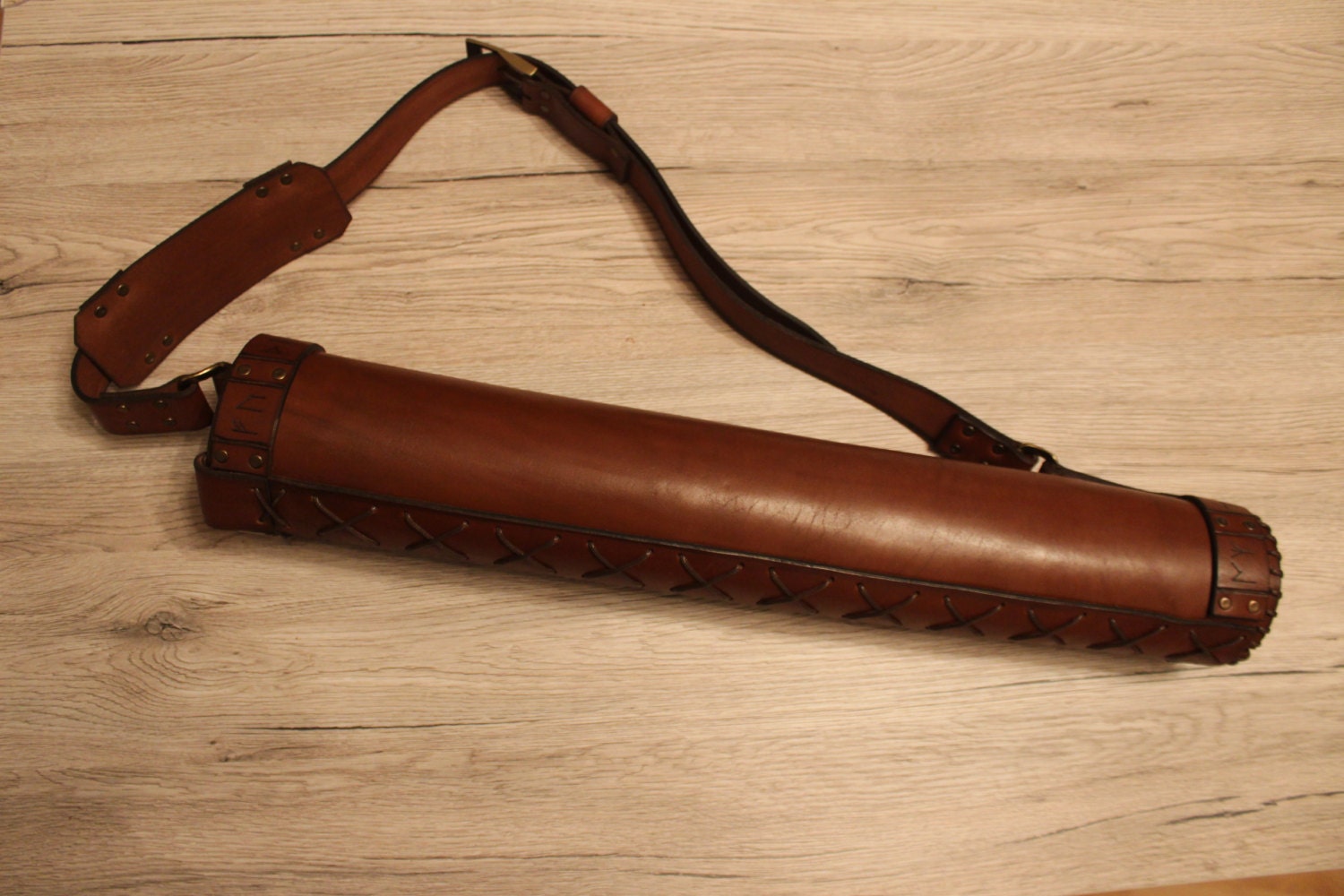

Since this product is made with leather, each piece will vary in color and textures. The back of the quiver has two loops so a belt can be threaded through the back of it, if you would prefer a more secure quiver for your shooting. After the leather is cut, it is stamped, died, prepped for dewing and then sewn with extra heavy 277 sized bonded thread, for added strength. Also don't use any glue for the scarf seams.This personalized archery arrow quiver, is handcrafted right here in Oklahoma. Also make sure the scarf thread (or whatever it's called) is facing the right direction when sewing, coloured side up. You probably want to go from the bottom up to make things easier for you.


I started at the top and continued downwards, big misstake. When the bottom is in place you can start to seal the sides. I connected the small part just above the bottom (under the bottom shoulder-strap holder) first (dont use any glue for this part), and after that sew the bottom in place. Time to start making this piece of leather into a quiver. It should be where you will later connect the sides with each other. Now you can sew the holder for the shoulder-strap in place. Maybe you can see the patterns on the pictures. But basically I went two forward (on the backside) and one backwards (on the frontside).
Leather quiver how to#
I will not try to explain the sewing technique, you can find a lot of guides on how to sew seams in leather. First apply the glue to the back of the leather, but not to near the edges the glue might smear onto the main body, and secure the leather with clothespins. Next up is the top and bottom parts (not THE bottom but the bottom decoration). You should also mark the first set of holes with the first flap. Make sure to tripple check that the flaps align with the holes on the bottom. You won't need to glue these pieces beacause they are so small. This is beacause the seams of the flaps will be covered by the bottom part (the pictures is taken after everything has been sewed on). The first part you want to sew on is the flaps that will hold the bottom in place. It is also easier to do the next step if the leather is somewhat wet. If you want you can wait longer, but you will need to wet the leather again and it could ruin the colour. Let the dyed leather dry for 1 hour before continuing. For the smaller parts I applied the dye directly onto the leather, this will make it darker than the water diluted part. For the main body I poured some dye in some hot water (sadly I do not have any pictures) and let the leather sit for a while (my dye is alcohol-based, do not do this with water-based dyes). Some dyes can not be washed away and will ruin your clothes. When you are dyeing the leather I would recommend to use some old and worn clothes. When cutting the leather it is much easier to do it when the leather is wet. I didn't make my shoulder-strap out of leather, I used one from an old bag in my garage, so if you want to make it out of leather you might need more than 4sq feet. The main body is just part of 40cm (16in) by 35cm (14in) leather. Otherwise you will end up with a piece that could have your drawings all over it. The bottom is a circle with a (approximately) 35cm (14in) circumference Remember to only draw on the BACKSIDE of the leather, the rough and dark side. The bottom part (the crown) is 40cm (16in) wide and 10cm (4in) high. Some of the top part is 10cm (4in) above the edge of the main body. The top piece (the pointy one facing downwards) is 40cm wide (16in) and 25cm (10in) high. I drawed mine myself, but I needed to widen it quite a bit when I drew it onto the leather. The first thing you need to do is to know what design you are going to use.


 0 kommentar(er)
0 kommentar(er)
